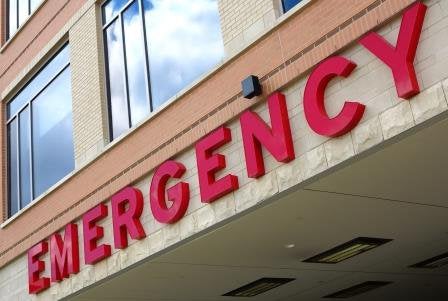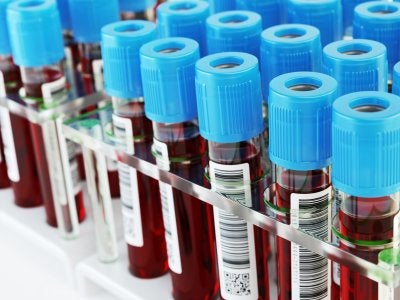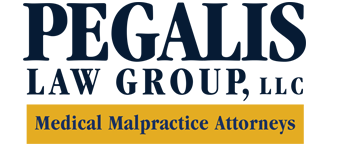-
Spotlight on Preventable Emergency Room Errors

When you go to the emergency room, it’s only natural to assume that you will be well taken care of by conscientious care providers. Unfortunately, mistakes do happen—and even experienced healthcare professionals can make them. In fact, emergency room errors are far more common than you might assume. These are some of the types of preventable emergency room errors that are most likely to occur.
Medication Errors
In the atmosphere of an emergency room, it’s entirely possible for medication errors to happen—and the results can be serious. A patient may receive a dosage that is too high, one that is too low, or even the wrong medication entirely. If you’re not getting the correct level of medication—or worse, a medication that isn’t intended for you—it can make your condition worse.Misdiagnosis
If you aren’t properly diagnosed when you get to the emergency room, you won’t get the treatment you need. Here’s a possible scenario: A patient’s appendicitis is mistaken for ordinary stomach pains, and he or she is prescribed medication and discharged instead of an emergency appendectomy to avoid a burst appendix and possible sepsis.Misreading Test Results
When a test is given to you at an emergency room, it’s important that the staff reading it does so properly. Tests are essential for determining the nature of your condition so you can proceed with the appropriate treatment. If your test results are misread or misinterpreted, and you are discharged from the emergency room, it can result in serious injury or even death. For example, if a radiologist fails to read a chest X-ray properly that shows developing pneumonia, and you are discharged without proper medication, it can lead to sepsis and even death.If you are concerned about a misdiagnosis or possible medical error, contact the law firm of Pegalis & Erickson, LLC in New York. For 45 years, we have advocated for people of all ages, in order to help our clients financially and make healthcare safer for everyone. You can reach us today by calling (516) 684-2900.
Attorney Advertising
-
Ovarian Cancer Awareness Month: Understanding Your Risk Factors

Ovarian cancer is a type of cancer that develops in a woman’s ovaries. While ovarian cancer is relatively rare, it’s important to diagnose it in its earliest stages so that it can be treated effectively. Unfortunately, ovarian cancer is difficult to diagnose easily because its symptoms are subtle. Since there is no screening for early ovarian cancer, it’s important to talk to your doctor if you are considered to be at risk. September is Ovarian Cancer Awareness Month, so it’s the perfect time to check yourself for the symptoms which include bloating, pelvic or abdominal pain, vaginal bleeding, weight gain or loss, change in bowel or bladder habits, to name a few. These are some of the main risk factors for developing ovarian cancer:
- Family history of ovarian or breast cancer
- A personal history of breast cancer prior to age 40
- A personal history of breast cancer prior to age 50 as well as one or more relatives diagnosed with breast or ovarian cancer at any age
- Two or more close relatives diagnosed with breast cancer prior to age 50, or with ovarian cancer diagnosed at any age
- Ashkenazi Jewish Heritage and a personal history of breast cancer prior to age 50
- Ashkenazi Jewish Heritage and a first or second-degree relative diagnosed with bread cancer prior to age 50, or with ovarian cancer at any age
- The BRCA1 or BRACA2 genes put you at high risk. 1 in 5 or higher if you inherited certain mutations in genes that are involved in cell growth division and DNA repair
If you are concerned about a misdiagnosis or possible medical error, contact the law firm of Pegalis & Erickson, LLC in New York. For 46 years, we have advocated for people of all ages, in order to help our clients financially and make healthcare safer for everyone. You can reach us today by calling (516) 684-2900.
Attorney Advertising
-
What Is Medical Malpractice?
If you’re considering bringing a medical malpractice suit, it’s important that you understand what the term means. Medical malpractice is defined as having happened when a healthcare provider causes harm to a patient through the provider’s own negligence. In order for medical malpractice to have taken place, three things must be present: The patient must have suffered demonstrable harm, the provider must have delivered substandard care, and there must be a direct link between the quality of that care and the injury suffered by the patient. Medical malpractice can happen in numerous ways, including unnecessary treatment, failure to diagnose, medication errors, and premature discharge.
 If you are concerned about a misdiagnosis or possible medical error, contact the law firm of Pegalis & Erickson, LLC, in New York. For 45 years, we have advocated for people of all ages, in order to help our clients financially and make healthcare safer for everyone. You can reach us today by calling (516) 684-2900.
If you are concerned about a misdiagnosis or possible medical error, contact the law firm of Pegalis & Erickson, LLC, in New York. For 45 years, we have advocated for people of all ages, in order to help our clients financially and make healthcare safer for everyone. You can reach us today by calling (516) 684-2900. -
Skin Cancer: Know the Dangers and Take Action
 It is Skin Cancer Awareness Month and professional skin checks with your dermatologist are important for everybody. The effectiveness of early treatment is why it’s so critical to diagnose skin cancer as early as possible. Here’s what you need to know about #skincancer:
It is Skin Cancer Awareness Month and professional skin checks with your dermatologist are important for everybody. The effectiveness of early treatment is why it’s so critical to diagnose skin cancer as early as possible. Here’s what you need to know about #skincancer: How prevalent is skin cancer and is it treatable?
Skin cancer is the most common type of cancer. In the U.S. there are more newly diagnosed cases of skin cancer today than all other cancers put together. Some 20 percent of Americans will develop a skin cancer in their lifetime. The three most common types of skin cancer are melanoma, squamous cell carcinomas, and basal cell carcinomas. Melanoma is highly treatable in its early stages, but it becomes progressively harder to treat as it worsens. Squamous cell carcinomas and basal cell carcinomas are also both curable if they are caught early.Can skin cancer be misdiagnosed?
Unfortunately, signs of skin cancer do get missed by medical professionals, even experienced ones, during skin checks. Dangerous carcinomas may be confused with acne, and a melanoma can be mistaken for a harmless mole. Early diagnosis is the key to effective treatment for many types of skin cancer. If a medical professional failed to diagnose your skin cancer in a timely way, you can call an experienced medical negligence attorney for a free consultation to find out what your rights are.If you are concerned about a misdiagnosis or possible medical error, contact the law firm of Pegalis & Erickson, LLC in New York. We advocate for people of all ages to help our clients obtain justice and make healthcare safer for everyone. You can reach us now at (516) 684-2900.
-
What Are the Symptoms of a Stroke?

A stroke should always be treated as a medical emergency, and immediate help should be sought. The sooner treatment is provided for stroke, the more likely it is to be effective at preventing extensive brain damage. That’s why it’s so important to know what the symptoms of stroke are. People who are having a stroke may feel lightheaded, experience sudden fatigue, or have trouble keeping their balance. They may also experience abrupt vision problems, or be struck by a sudden and painful headache. However, the most common signs of stroke are slurred speech, numbness and signs of paralysis in one arm, and drooping in one side of the face. If a person displays any of these three signs, call 911.
If you are concerned about a misdiagnosis or possible medical error, contact the law firm of Pegalis & Erickson, LLC in New York. For 45 years, we have advocated for people of all ages, in order to help our clients financially and make healthcare safer for everyone. You can reach us today by calling (516) 684-2900.
-
Learn the Warning Signs During Preeclampsia Awareness Month
Preeclampsia is a serious condition that can happen to women during pregnancy. This condition is characterized by unprecedentedly high blood pressure levels and may also involve liver and kidney damage. If it goes untreated and becomes severe, preeclampsia can have serious health consequences for both mother and child. According to the U.S. Department of Health and Human Services, more than 3 percent of all pregnancies in the United States may be impacted by preeclampsia.
 The possible symptoms of preeclampsia include chronic headaches, vision changes, reduced urination, hyperreflexia, shortness of breath, sudden weight gain, and swelling in the face, hands, or ankles. In many cases, however, the symptoms are not recognized and attributed to pregnancy in general. May is Preeclampsia Awareness Month, so it’s the perfect time to educate yourself about the condition and the importance of proper screenings during pregnancy.
The possible symptoms of preeclampsia include chronic headaches, vision changes, reduced urination, hyperreflexia, shortness of breath, sudden weight gain, and swelling in the face, hands, or ankles. In many cases, however, the symptoms are not recognized and attributed to pregnancy in general. May is Preeclampsia Awareness Month, so it’s the perfect time to educate yourself about the condition and the importance of proper screenings during pregnancy. If you are concerned about a misdiagnosis or possible medical error, contact the law firm of Pegalis & Erickson, LLC in New York. For 45 years, we have advocated for people of all ages, in order to help our clients financially and make healthcare safer for everyone. You can reach us today by calling (516) 684-2900.
-
Misdiagnosing Cerebral Palsy as Autism
Cerebral palsy and autism are different conditions that sometimes have similar symptoms. They both manifest early in life, they are both related to brain malfunction, and they both present some of the same symptoms. Because of this, cerebral palsy is frequently misdiagnosed as autism in young children. If your child has been diagnosed with autism but shows symptoms of cerebral palsy such as involuntary motions or low muscle tone, you should get a second opinion from a different physician. It’s also important to have an attorney you can look to for guidance if it turns out that your child was misdiagnosed at an early age.
 Pegalis & Erickson, LLC, represents parents of children who were misdiagnosed or otherwise let down by their medical providers. If you are concerned about a misdiagnosis or possible medical error contact the law firm of Pegalis & Erickson LLC in New York. For 45 years we have advocated for people of all ages, in order to help our clients financially and make healthcare safer for everyone. You can reach us today by calling (516) 684-2900.
Pegalis & Erickson, LLC, represents parents of children who were misdiagnosed or otherwise let down by their medical providers. If you are concerned about a misdiagnosis or possible medical error contact the law firm of Pegalis & Erickson LLC in New York. For 45 years we have advocated for people of all ages, in order to help our clients financially and make healthcare safer for everyone. You can reach us today by calling (516) 684-2900. -
Steps to Take If a Diagnosis Is Inconclusive
When you have a clear-cut diagnosis, your course of action may seem clear. What happens, however, when your diagnosis is inconclusive? Living with an uncertain medical verdict can be extremely stressful, because you may have no way of knowing when you will get a more conclusive diagnosis. A recent study found that as many as 12 million people in the United States get an inconclusive—or faulty—diagnosis annually. Here are some steps to take after you have received an inconclusive diagnosis:
 Be proactive, not passive.
Be proactive, not passive.
Many patients assume that the medical practitioners who see them always know best, and that they are always in safe hands. Unfortunately, this isn’t always the case. By being an active, engaged, and informed patient, you can help to ensure that you get quality care.Seek out a second opinion.
If your first diagnosis was inconclusive, it goes without saying that you should try again. Go to a different doctor for a second consultation. To ensure objectivity, it’s best to avoid telling this doctor what the first diagnosis was, at least until you have received the second opinion.Talk to your primary care physician.
You should always start by seeing your usual doctor, who will have a better sense of your overall health than anyone else will. While your diagnosis may be made by a specialist, it’s still important to keep your primary care physician in the loop.Keep yourself informed.
In today’s world, it’s easier than ever for patients to get educated about their health and get the accurate information they need to make smart choices. Always do your research before going to any medical practitioner so you’ll be better equipped to ask useful questions.If you are concerned about a misdiagnosis or possible medical error, contact the law firm of Pegalis & Erickson, LLC in New York. For 45 years, we have advocated for people of all ages, in order to help our clients financially and make healthcare safer for everyone. You can reach us today by calling (516) 684-2900.
-
The Challenges in Diagnosing Cancer
Diagnosing cancer in its earliest stages can make an enormous difference in how successful treatment is. By the same token, failing to diagnose cancer on a timely basis can reduce the effectiveness of treatment. Even if medical practitioners are careful and conscientious, however, it can still be difficult to diagnose many forms of cancer. These are some of the types of cancer that present the greatest challenges:
Pancreatic Cancer
While it is considered relatively rare, pancreatic cancer also has one of the lowest survival rates of any type of cancer. The symptoms are subtle and can easily be mistaken for the signs of a different condition. There is also no widely agreed-upon method for effectively detecting this cancer at its earliest stages.Liver Cancer
Like pancreatic cancer, liver cancer does not usually show any obvious symptoms in its early stages. Since the liver is located deep inside the body, the tumors are impossible to detect through self-examination. By the time it can be more easily diagnosed, the disease has usually spread to the point where it is much more challenging to treat. Brain Cancer
Brain Cancer
Brain cancer is one of the most difficult forms of cancer to identify. There is no way to screen for a brain tumor, and the symptoms—which include headaches and muscle weakness—are readily confused with those of other illnesses. Unfortunately, brain cancer is not usually diagnosed until its later stages.Ovarian Cancer
Cancer of the ovaries is the deadliest type of reproductive cancer. As with other hard-to-detect cancers, ovarian cancer does not present any obvious symptoms at first. It is also difficult to detect during pelvic exams, and it is not usually found during Pap tests. There is no reliable screening for ovarian cancer, so it’s important to see a physician if you notice any of the warning signs—which include bloating, feeling unusually full after eating, and more frequent urination. Women who are positive for the BRCA gene are at a greater risk for developing Breast Cancer but also Ovarian Cancer. You should discuss your particular situation with your physician to establish a plan for surveillance and care options.If you believe that you or a loved one has suffered serious consequences because a medical professional failed to identify the symptoms of cancer, it’s time to talk to Pegalis & Erickson, LLC. Our legal team has nearly 50 years of experience bringing successful medical malpractice suits on behalf of our clients. For a free consultation at our law office in Long Island, New York, call (516) 684-2900.
-
Surprising Facts About Missed and Delayed Diagnoses
When most people go to the doctor, they bring with them the assumption that they will find out if there is anything wrong with their health. Unfortunately, this isn’t always the case. It is nowhere near as rare as you might assume for medical practitioners to fail to diagnose a serious health problem—or to diagnose it too late. Here are some facts that might surprise you:
 Diagnostic errors are extremely common. According to a recent study by the Institute of Health, about 5 percent of all Americans who visit a medical professional in the course of a year will receive a faulty diagnosis. This adds up to about 12 million people. The study also observed that the number of diagnostic errors appears to go up over time, as medical treatments increase in complexity.
Diagnostic errors are extremely common. According to a recent study by the Institute of Health, about 5 percent of all Americans who visit a medical professional in the course of a year will receive a faulty diagnosis. This adds up to about 12 million people. The study also observed that the number of diagnostic errors appears to go up over time, as medical treatments increase in complexity. Almost everyone will receive at least one wrong diagnosis. While 5 percent may not sound like an enormous amount, the number of people who are wrongly diagnosed multiplies with each passing year. The Institute of Health study found that most people living in the U.S. will experience at least one late—or flat-out wrong—diagnosis at some point in their lives.
Diagnostic errors can be hard to identify. It’s easy to assume that you’ll know when you’ve been wrongly diagnosed—but that isn’t necessarily true. Many people do not discover for years that they have gotten the wrong diagnosis. Diagnosing a patient is a challenging and multifaceted process, and there are many points at which the diagnosis can go astray. In many cases, the issue is lack of proper communication between medical professionals and their patients.
If your life—or the life of a loved one—has been disrupted by a delayed diagnosis, you may have a medical malpractice claim. Talk to one of the attorneys at Pegalis & Erickson, LLC, for legal guidance that will help you protect your rights. You can set up a free consultation at our office in Long Island, New York, by calling us at (516) 684-2900.
Recent Posts
Popular Posts
categories
- Uncategorized
- Infographic
- Patient Safety
- Patient Health
- Stillbirth
- Birth Injuries
- Medical Malpractice
- Medical Negligence
- Event
- Erb's Palsy
- Injury
- ER
- Video
- Cancer Misdiagnosis
- Medication Errors
- Cerebral Palsy
- Medical Negligence Lawyer
- Anesthesia Injuries
- Brachial Plexus
- Prostate Cancer
- About Us
- Men's Health
- Skin Cancer
- Breast Cancer
- Misdiagnosis
